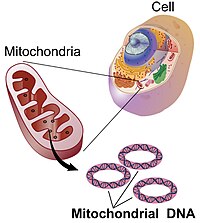
Photo from wikipedia
In Mexico, Diabetes mellitus (DM) is a serious health problem, and although the current pharmacological treatments for DM such as insulin and oral hypoglycemics are available, the Mexican population continues… Click to show full abstract
In Mexico, Diabetes mellitus (DM) is a serious health problem, and although the current pharmacological treatments for DM such as insulin and oral hypoglycemics are available, the Mexican population continues to use medicinal plants in the treatment of DM. The antidiabetic properties of the plant species that belong to the Cucurbitaceae family has already been recognized worldwide. Since Mexico is one of the most important centers of diversity of Cucurbitaceae, the present work contributes to the review of the most used species of Cucurbitaceae in the treatment of DM in Mexico. The reviewed species (Cucurbita ficifolia, C. maxima, C. moschata, C. pepo, Ibervillea sonorae, Sechium edule, Citrullus lanatus, Cucumis melo, and C. sativus) revealed that the antidiabetic effects exerted are effective in a number of mechanisms involved in the complex pathogenesis of DM: hypoglycemic, antioxidant, anti-inflammatory, anti-obesity, protective effects on diverse organs and cells, as well as in the control of dyslipidemias; furthermore, the select species of the Cucurbitaceae family could also be essential components of diets for the control of DM in patients with the disease. Thus, the Cucurbitaceae species selected in the present work represent a source of antidiabetic agents that perhaps establish the bases for novel clinical treatments.
Journal Title: Molecules
Year Published: 2022
Link to full text (if available)
Share on Social Media: Sign Up to like & get
recommendations!